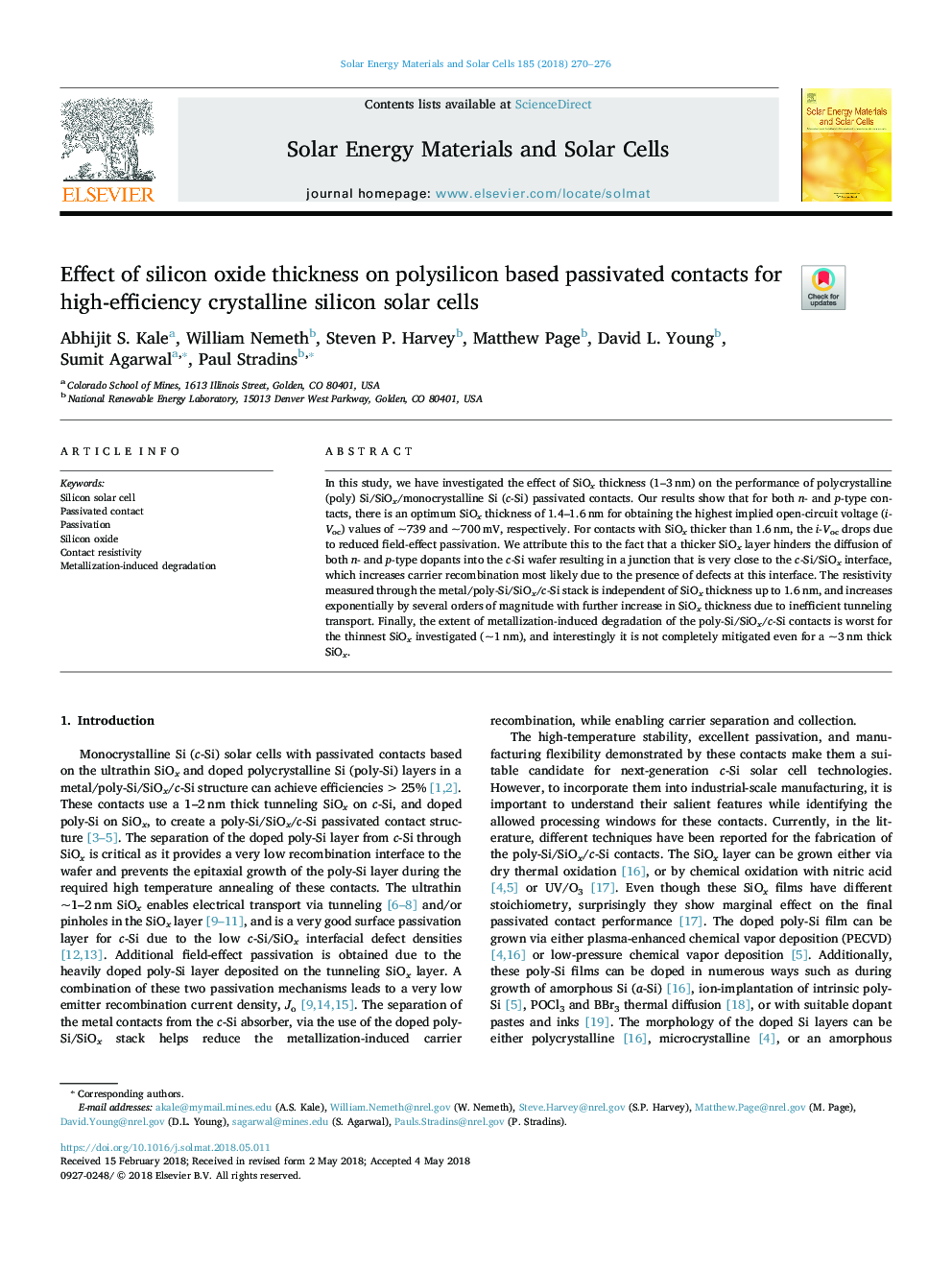| Article ID | Journal | Published Year | Pages | File Type |
|---|---|---|---|---|
| 6534025 | Solar Energy Materials and Solar Cells | 2018 | 7 Pages |
Abstract
In this study, we have investigated the effect of SiOx thickness (1-3â¯nm) on the performance of polycrystalline (poly) Si/SiOx/monocrystalline Si (c-Si) passivated contacts. Our results show that for both n- and p-type contacts, there is an optimum SiOx thickness of 1.4-1.6â¯nm for obtaining the highest implied open-circuit voltage (i-Voc) values of ~739 and ~700â¯mV, respectively. For contacts with SiOx thicker than 1.6â¯nm, the i-Voc drops due to reduced field-effect passivation. We attribute this to the fact that a thicker SiOx layer hinders the diffusion of both n- and p-type dopants into the c-Si wafer resulting in a junction that is very close to the c-Si/SiOx interface, which increases carrier recombination most likely due to the presence of defects at this interface. The resistivity measured through the metal/poly-Si/SiOx/c-Si stack is independent of SiOx thickness up to 1.6â¯nm, and increases exponentially by several orders of magnitude with further increase in SiOx thickness due to inefficient tunneling transport. Finally, the extent of metallization-induced degradation of the poly-Si/SiOx/c-Si contacts is worst for the thinnest SiOx investigated (~1â¯nm), and interestingly it is not completely mitigated even for a ~3â¯nm thick SiOx.
Related Topics
Physical Sciences and Engineering
Chemical Engineering
Catalysis
Authors
Abhijit S. Kale, William Nemeth, Steven P. Harvey, Matthew Page, David L. Young, Sumit Agarwal, Paul Stradins,
